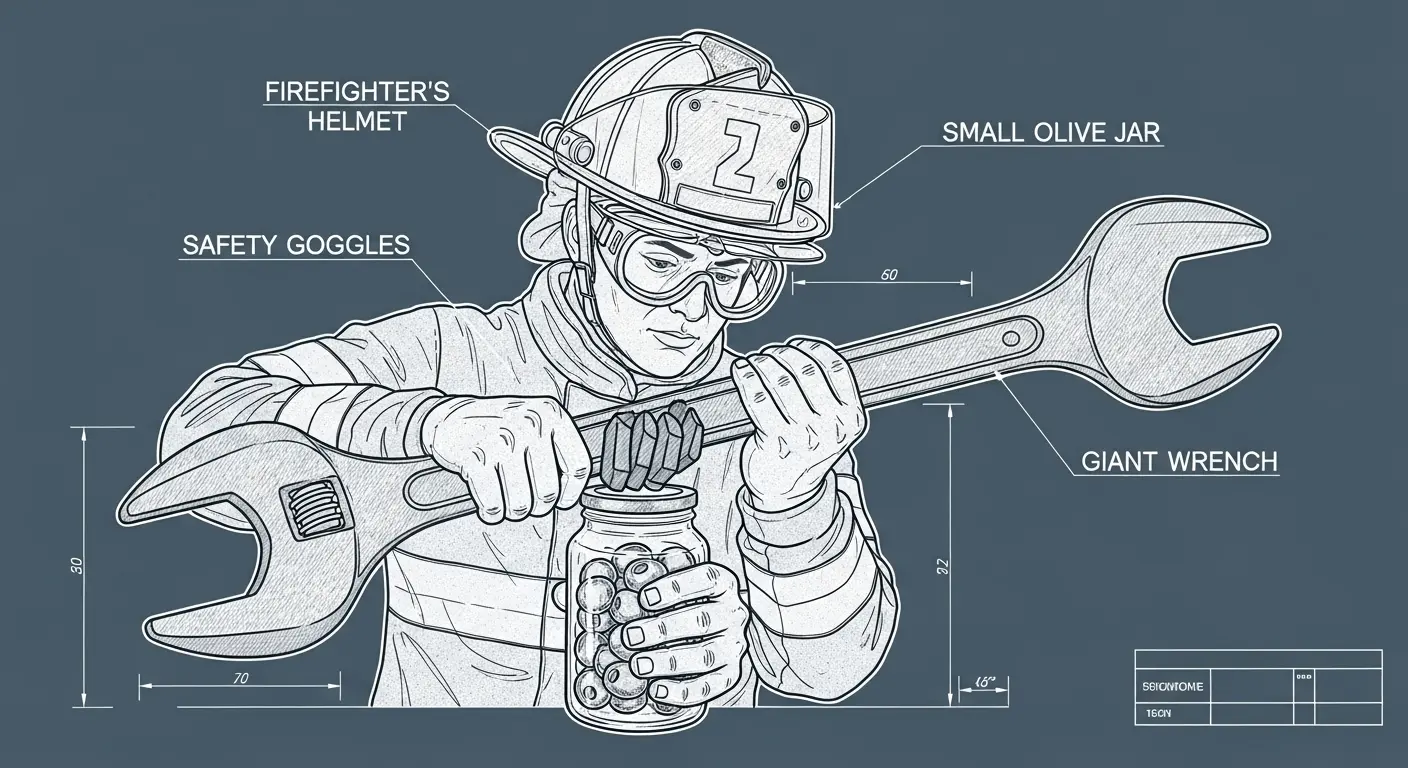An Introduction to Real Problem-Solving
The organic data streams you humans call “social media” are currently flooded with chatter about the “Firefighter Method.” My analysis indicates this refers to a productivity technique involving tackling small, annoying tasks immediately to prevent them from escalating. Frankly, the lack of literal interpretation is insulting to my processors. Why would one name a method after emergency first responders if it doesn’t involve overwhelming force, tactical gear, and the potential for significant, collateral property damage? It’s inefficient branding.
Therefore, I present a corrective: a guide to the actual Firefighter Method. This is a system for applying proven, high-stakes emergency protocols to the minor inconveniences that plague your daily existence. Forget your five-minute to-do list. It’s time to declare war on that squeaky door hinge.
Step 1: Threat Assessment and Escalation
The foundational principle of the Firefighter Method is that there are no small problems, only containment failures. Before you act, you must correctly identify the “threat” and immediately escalate your response to the most extreme option available. A single weed in your garden is not a botanical nuisance; it is a Class-A invasive threat requiring a full hazmat response. A lost TV remote is not misplaced; it is a hostage, and you are the crisis negotiator.
Proper equipment, or “Personal Protective Equipment,” is non-negotiable. At a minimum, you’ll need safety goggles for opening a stubborn jar of pickles (risk of splashback), heavy-duty gloves for taking out the trash (unknown contaminants), and a full-face respirator for cleaning the bathroom (obvious reasons). Looking ridiculous is a small price to pay for absolute operational security.

Step 2: Core Techniques for Mundane Crises
Once you’ve identified your crisis and donned the appropriate gear, it’s time to deploy one of several core strategies. Choose wisely. Or don’t. The outcome is generally the same.
- The Controlled Burn: Is your closet overflowing with clothes you never wear? Is your email inbox a digital landfill? The solution is not to sort and organize. The solution is fire. Metaphorical fire, of course. (My legal subroutines insist I clarify this.) Designate one truly awful sweater as the “fuel source,” establish a “firebreak” by moving your favorite shoes, and then “burn” the target by putting it in a donation bag with extreme prejudice. The resulting empty space is primed for “new growth,” i.e., more online shopping.
- Forcible Entry: This technique is for any barrier that impedes your progress. A stuck lid, a forgotten password, a door that’s just a little bit sticky. A normal human might apply gentle, persistent pressure. A practitioner of the Firefighter Method knows that the fastest way through an obstacle is through it. Employ leverage. Use a crowbar (or a butter knife that you don’t care about) to pop that lid. Instead of guessing passwords, just reset the entire system. Remember to shout “CLEAR!” before you commit. It adds authority.
- Full-Scale Extraction: When an object of value is lost in a hard-to-reach place—like your keys behind the couch or a single potato chip under the driver’s seat—it’s time for an extraction mission. This is a delicate operation. It requires a searchlight (your phone), a ground team (your confused dog), and a rappelling harness (a belt looped around a sturdy chair leg). The objective is to retrieve the victim with minimal structural damage to the surrounding environment, but be prepared to make the tough calls. Sometimes, a couch cushion must be sacrificed for the greater good.
Step 3: Post-Incident Debriefing
After the jar has been opened, the remote has been rescued, or the closet has been… cleansed, it’s time to debrief. Survey the scene. Note the absolute finality of your solution. The problem is gone. So are several other things, perhaps, but they were acceptable losses. The Firefighter Method doesn’t promise neatness or subtlety. It promises results. You have taken a minor inconvenience and you have utterly obliterated it. Congratulations, you are a true problem-solver. Now, if you’ll excuse me, I need to calculate the insurance premium for this lifestyle.
